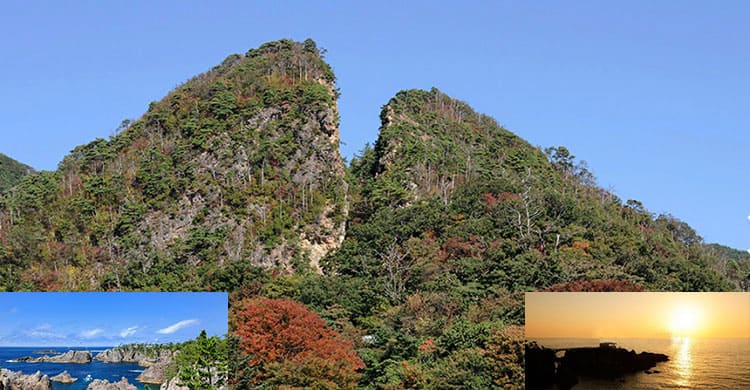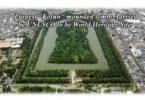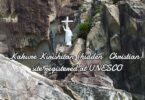Hi how are you? Today we announce the decision made the month before last, July to register the Sado Island Gold Mine in Niigata Prefecture as a World Heritage Site.
On July 27, 2024, at a meeting of the World Heritage Committee of UNESCO in New Delhi, India, the Sado Island Gold Mines were added to the World Heritage list.
But long-sought World Heritage registration decision
There was a long dispute ・・・The problem of applying for World Heritage status, that was South Korea had opposed the registration of the site as world heritage due to the wartime forced labor of workers from the Korean peninsula.
However, as Japan followed the ICOMOS recommendations, South Korea ultimately approved registration.
But have you ever heard of or visited Sado Island?
Even many travel fans who have toured the world’s most popular tourist destinations may not have visited or geographically familiarized themselves with Sado Island, so let us begin by introducing you to Sado Island.
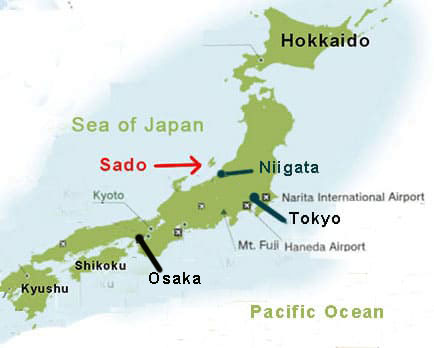
Sado Island is the sixth largest island in Japan after the mainland of Japan, Hokkaido, Kyushu, Shikoku, and Okinawa, where is about 855 square kilometers (about 1.5 times the size of Tokyo’s 23 wards) and is an idyllic place where about a little over 50,000 people live leisurely lives.
Access to Sado
Sado Island is about two hours from Tokyo to Niigata by Shinkansen(bullet train) and a bit over one hour from Osaka to Niigata by air, then from Niigata to Sado, you can choose either by Jetfoil with one hour or two hours and a half by Car-ferry as illustrated both below.

Characteristics of Sado
Sado Island is about 262 km in circumference, and it takes about seven hours without a break to drive 210 km around the coast of the island、with narrower road compared to that of mainland and besides many tunnels.
It is a scenic spot with sheer cliffs and countless reefs stretching for about 50 km, and Senkaku Bay is particularly famous as shown below.
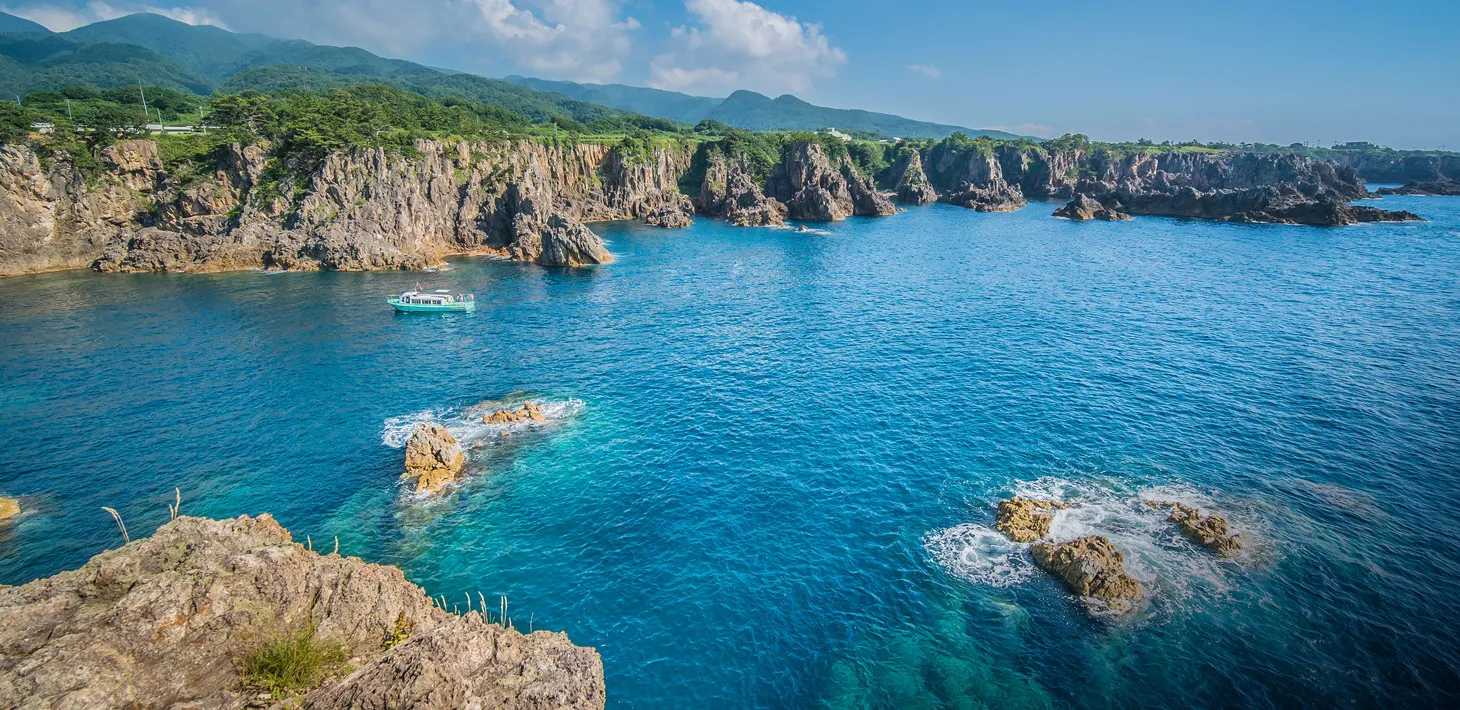
And it is blessed with a marine climate, which is hot and humid in summer, but in winter, due to the influence of the Tsushima Warm Current that flows off the coast of Sado, it receives less snow than the mainland.
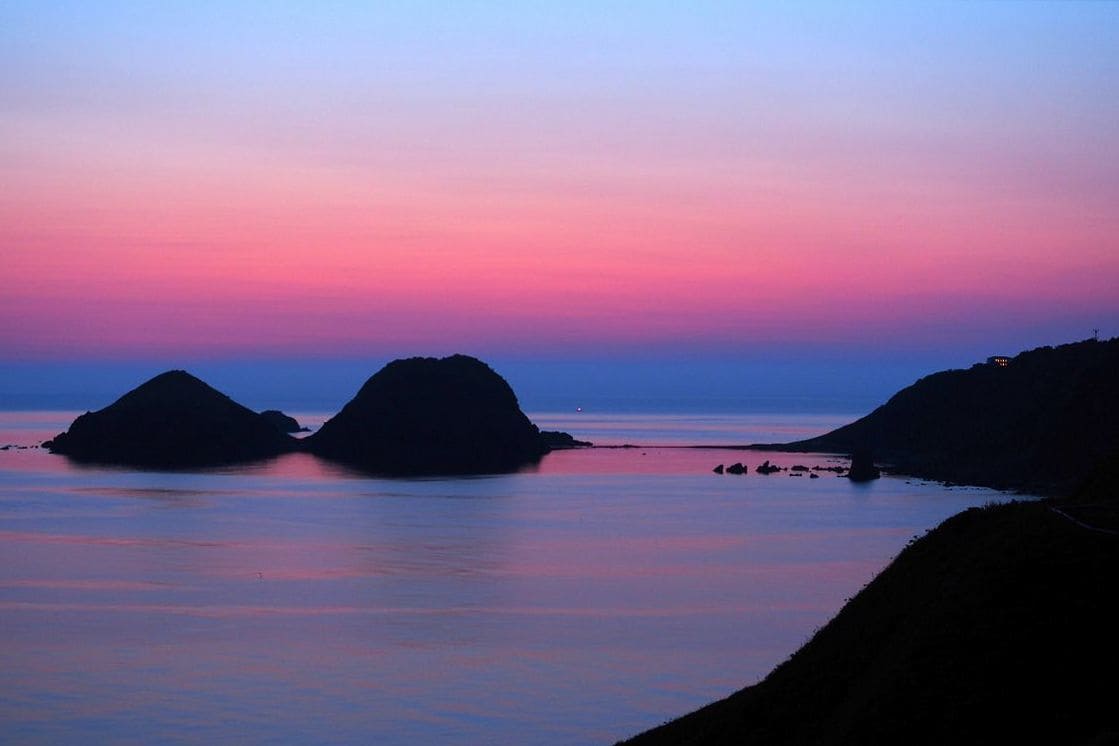 (above photo)Before sunrise, the silhouette of Futatsugame against the splendid morning glow is a truly magnificent sight!
(above photo)Before sunrise, the silhouette of Futatsugame against the splendid morning glow is a truly magnificent sight!
Taking advantage of the rich soil and climate, agriculture and fishing are thriving, and the island is famous for fruit cultivation such as Sado rice, Okesa persimmons, and lectier(European pear), seafood such as yellowtail, snow crab, and oysters, and Sado beef.
One of the tourist attractions of Sado is the tub boat at Ogi Port
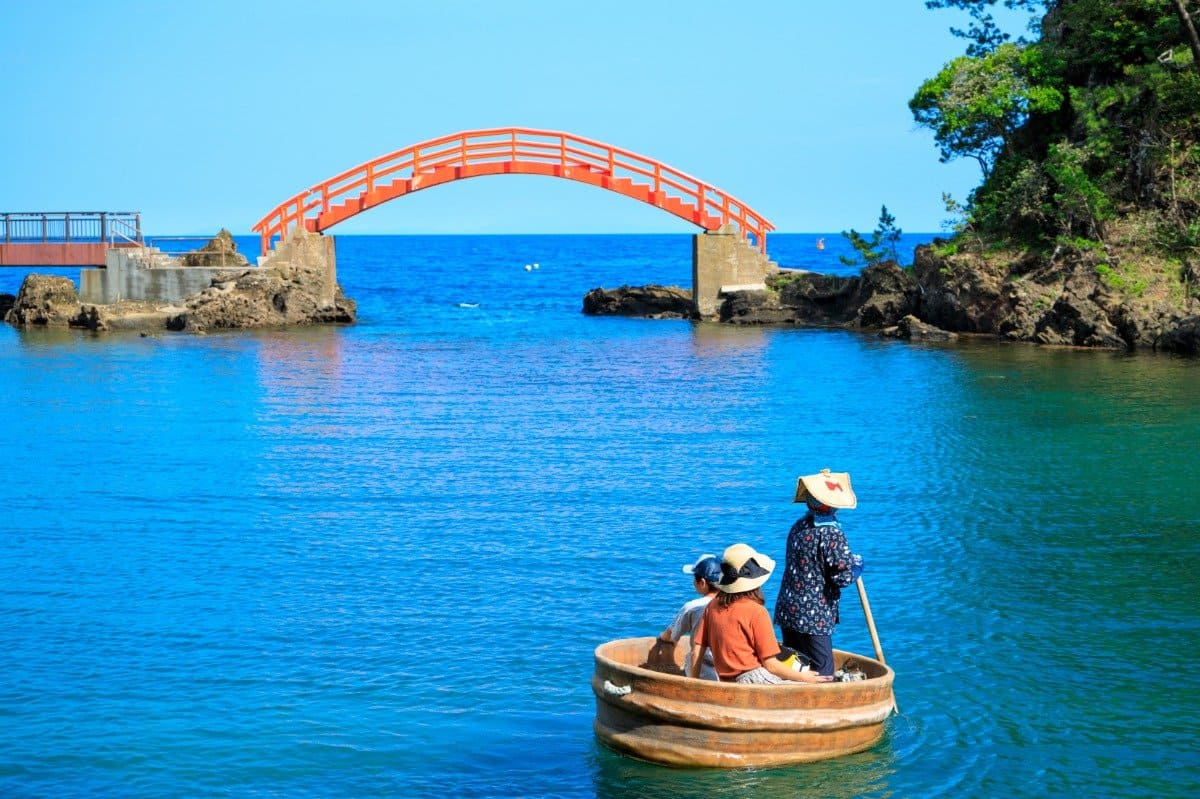
Originally, it was used to catch turban shells, abalone, wakame seaweed, etc. Even today, tub boats are used to catch sea onions on the Ogi coast.
Here’s a simple video which surely gives you a pleasant period of time like you’re having fun;
Sado Island is of volcanic origin and features two parallel mountain ranges stretching from southwest to northeast and separated by one alluvial plain.
Gold and silver deposits were formed by the rising of hydrothermal water to the land surface and forming veins in the rock。
Tectonic activity first submerged the surface deposits to the seabed, which was later raised again by tectonic movements.
Placer deposits were exploited in Nishimikawa Area, located on the north-western side of the Kosado Mountains.
Contents
Most important feature in the island is “Sado Gold and Silver Mines”
Sado has 55 mines that produce gold, silver, and other minerals, collectively known as the “Sado Gold and Silver Mine”.
Over the 400 years since the Edo period (1603-1868), the Sado Gold and Silver Mine produced 78 tons of gold and 2,330 tons of silver, and as Japan’s largest gold and silver mine, it had a major impact on the domestic and international economies, especially on the finances of the Edo period shogunate.
The site on the island of Sado is a huge complex consisting of the Nishimikawa placer gold mine and Aikawa-Tsurushi gold and silver mine, with four centuries of history until operations ended in 1989.
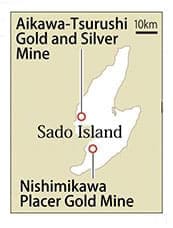
And the Aikawa town/mine in particular is commonly known as Sado Kinzan, and is a major tourist draw.
Aikawa Town was a bustling town during the height of the “gold rush” in the early Edo period. The booming mining industry attracted many people to Sado in search of work.
At its peak in the early 1600s, Aikawa was home to around 50,000 people, almost the same as the entire island’s present population.
Two major pits
At the Sado Gold Mine Historic Site, you can tour two mining pits to see where the precious metal was extracted.
The narrower Sōdayū Pit was used during the Edo period, while the other Doyu Pit was excavated in 1899 to accommodate new technology like ore cars and crushing pits.
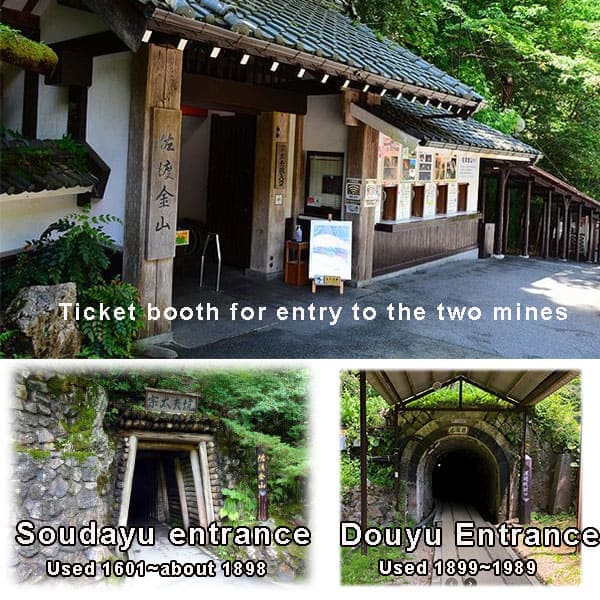
The crushed ore was transported to the nearby Kitazawa Flotation Plant, a state-of-the-art facility for processing gold ore.
Kitazawa Flotation Plant has become a popular tourist spot known as Sado’s Laputa, in reference to the Ghibli movie

Lightup

Why does the mountain look like it’s been split into a V shape?
The result of digging down a vein of gold by human power in the early Edo period, it became cracked.
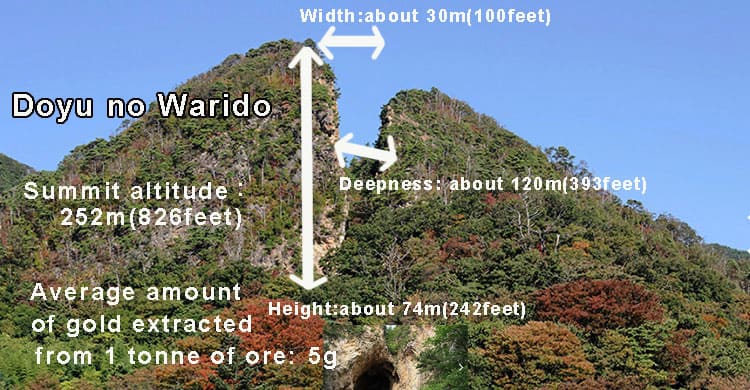
The “Doyu no Warido,” as it is called, is the site of an open pit mining operation in the Edo period (1603-1868), which is said to be one of the earliest mining sites in the Sado gold and silver mine development, and the mountain broke into a V-shape as it was being mined for a huge vein of gold.
The Aikawa Gold and Silver Mine was the largest in Japan, and boasted the country’s largest gold production from the late 16th century to the end of the 20th century.
It was managed by the government, and all the gold produced was used as currency, supporting the country’s finances for a long time.
What are the characteristics of the two mining pits?
Sōdayū mine
Mining and transportation work was done by hand, such as hand digging with a hammer and a chisel etc during the Edo period.

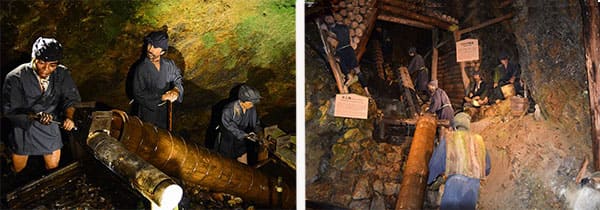 (Above two photos)Because of the low elevation of the Sado gold mine, when the shafts are below sea level, a large amount of groundwater rises to the surface.
(Above two photos)Because of the low elevation of the Sado gold mine, when the shafts are below sea level, a large amount of groundwater rises to the surface.
The process of draining this underground water is called “water change,” and it was a very very difficult task.
Mining was a daily struggle against underground drainage. The water wheel (Archimedes pump) developed in Europe was very effective in draining water at the Sado Gold and Silver Mine.
The moving dolls are so realistic and though you might feel creepy, you experience hard labor condition and you may get a moment’s peace.
Dōyū mine
From the Meiji period (1868) to the Heisei period (1989), mining machines were used, and transportation was done using trolleys.



What is the total length of the tunnels at Sado Gold Mine?
The gold vein at Sado Gold Mine stretched 3,000m from east to west, 600m from north to south, and 800m deep.
In pursuit of this vein, 78 tons of gold and 2,330 tons of silver were produced over the course of about 400 years from the Edo period to the Heisei period, making it the largest gold and silver mine in Japan.
The tunnels that were excavated spread out like an ant’s nest, with a total length including vertical shafts of about 400km (almost the same distance between Sado and Tokyo).
“Yawaragi”

Yawaragi” is a unique ritual art of Kanayama that has been handed down since the Edo period.
It is said to originate from the meaning of praying to the hard bedrock for “yawaragi” as well as “soothing” and “softening” the hearts of the mountain gods.
My memories of Sado Island

